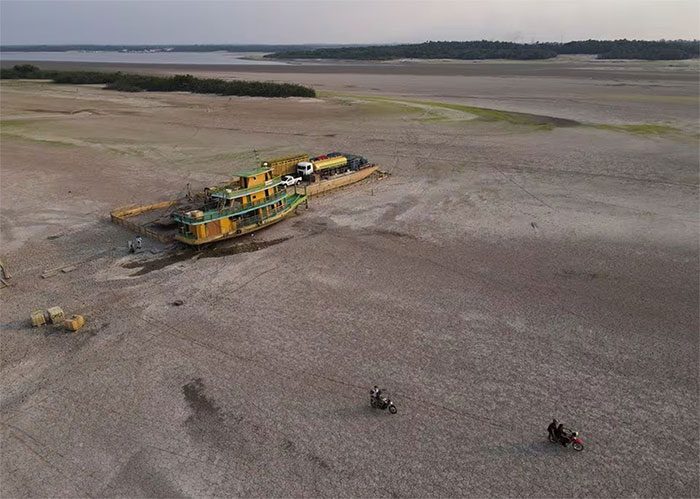A study published on January 25th reveals that climate change is the main culprit behind the record drought affecting the Amazon rainforest, which has depleted rivers, killed endangered dolphins, and disrupted the lives of millions in the region.
According to an analysis by World Weather Attribution, global warming has increased the likelihood of drought by 30 times, leading to extremely high temperatures and contributing to reduced rainfall. The study focused on the period from June to November of last year.

Vessels stranded on the sandbank of the Rio Negro River, in Cacau Pirera, Brazil. (Source: Reuters).
Last year, scientists warned that drought was occurring across all nine countries that contain the Amazon rainforest, including Brazil, Colombia, Venezuela, and Peru, and it is expected to worsen in 2024 as the rainy season begins to recede in May.
Protecting the Amazon, the world’s largest tropical rainforest, is considered crucial in mitigating climate change due to the vast amounts of greenhouse gases that the trees in this region absorb. The drought has caused river levels in many areas to drop to record lows.
Regina Rodrigues, a co-author of the study and a researcher at the Federal University of Santa Catarina in Brazil, emphasized that we should be genuinely concerned about the health of the Amazon rainforest.
Researchers indicate that drought can exacerbate wildfires, which, when combined with climate change and deforestation, could accelerate the Amazon’s decline towards a point of no return, leading to a desiccated ecosystem that is no longer a lush rainforest.
The study also highlights that periodic warming in the Eastern Pacific, known as El Niño, contributes to reduced rainfall, even though temperatures are not higher.
Ms. Rodrigues noted that while the region has faced at least three severe droughts in the past 20 years, the scale of this drought is unprecedented and affects the entire Amazon River basin.
In Brazil, a major branch of the Amazon River has reached its lowest level since records began in 1902, with smaller streams nearly disappearing.



















































